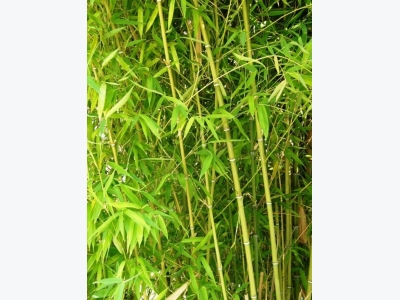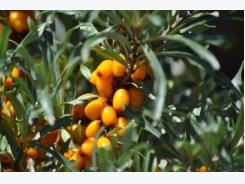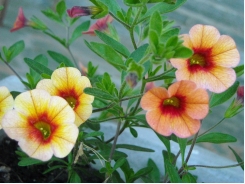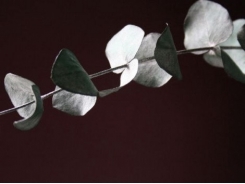How to Get Rid of Invasive Bamboo

Bamboo is a beautiful plant from Asia. There, nature provides a balance of predators and disease that keep bamboo in check.
However, here in the U.S. where it was presented for use as an ornamental plant, there isn't a natural management system to contain it.
Some varieties of bamboo are considered "invasive." Specifically, golden bamboo (Phyllostachys aurea), which is also known as fishpole bamboo or walking stick bamboo, is considered invasive. According to the University of Georgia Center for Invasive Species and Ecosystem Health, golden bamboo is invasive in twelve southern states from Texas and east to Florida and north to Maryland. It is also an invasive plant in California and in Oregon.
How to Identify Invasive Bamboo
Invasive bamboo develops into a very dense wall of stalks above ground, crowding other plants. Underground, it produces a system of rapid runners that overtake native plants' root systems. To have a look at some invasive golden bamboo check out these invasive bamboo images.
How to Eradicate Invasive Bamboo
To eradicate an infestation of bamboo entirely takes persistence and patience. The rhizomes can be found within a foot of the ground's surface. Cut the bamboo down to a few inches tall. Then, dig up as much of the roots and runners as possible. This can be done by hand for smaller areas. For larger areas, you may need to use power equipment.
Since bamboo is a type of grass, regular, consistent mowing will eventually cause bamboo rhizomes to give up and expire. If you choose to mow your bamboo to death, just know that it may take 2-3 years to finally get the job done. Even then, it's advisable to be on the lookout for new sprouts.
The use of an herbicide to get rid of invasive bamboo is another option. However, bamboo does tend to be resilient to herbicides, so many applications may be necessary. Complete eradication is best achieved when mowing is combined with the use of an herbicide.
An herbicide whose active ingredient is glyphosate, such as Roundup Original, is the best choice for bamboo eradication. Within a few days of mowing, watch for new growth to appear. Apply the herbicide directly to the new leaves. Again, the overall time frame for eradication may take years, so be diligent.
How to Grow Invasive Bamboo Responsibly
In spite of the warnings, if you choose to plant bamboo, consider planting it in a raised bed enclosed with stones or bricks to prevent the rhizomes from spreading. Or, if you already have invasive bamboo and would like to contain it, you might consider rhizome barriers specific to controlling bamboo. Rhizome barriers for bamboo are sheets of metal or plastic that are placed vertically into the ground in a perimeter around your designated bamboo area.
The sheets should be placed in trenches that are at least two feet deep. The top two inches of the sheets should remain above ground with a protective cap over any metal edges. The sheets should be placed end to end, and should overlap each other by at least two inches.
The barrier should completely surround the bamboo garden. This method prevents rhizomes from spreading. However, you will have to control any rhizomes that already exist outside of your perimeter to prevent their growth. You will also have to monitor the barrier over time to make sure no rhizomes are reaching under or over the metal.
Non-invasive Alternatives to Invasive Bamboo
While invasive bamboo is a plant that gardeners should avoid, fortunately, not all bamboo is considered invasive. "Clumping" bamboo does not produce the underground runners that create rapid, spreading growth. The rhizomes for clumping bamboo grow more slowly over time, and they sprout up in clumps. It is easily contained as an ornamental plant choice. Fargesia robusta, Fargesia rufa, and Fargesia scabrida are cold hardy varieties of clumping bamboo that are alternatives to invasive bamboo.
Better yet, you might want to just stick with native plant alternatives rather than introducing bamboo into your landscape. Florida leucothoe (Agarista populifolia) is a bush type plant with foliage that looks similar to clumping bamboo in shape, size, and color. Yaupon holly (Ilex vomitoria) is an alternative plant that grows similar in height to bamboo. Yaupon holly attracts and supports native wildlife, such as local birds and butterflies.
All plants have their proper place, and bamboo is no exception. So, let's do what we can to keep bamboo and other potentially harmful plants in their place. And don't be afraid to tell your neighbors what you know about invasive plants.
Tools

Phối trộn thức ăn chăn nuôi

Pha dung dịch thủy canh

Định mức cho tôm ăn

Phối trộn phân bón NPK

Xác định tỷ lệ tôm sống

Chuyển đổi đơn vị phân bón

Xác định công suất sục khí

Chuyển đổi đơn vị tôm

Tính diện tích nhà kính

Tính thể tích ao




 How to Grow Crossvine
How to Grow Crossvine  How to Grow Eucalyptus Trees
How to Grow Eucalyptus Trees